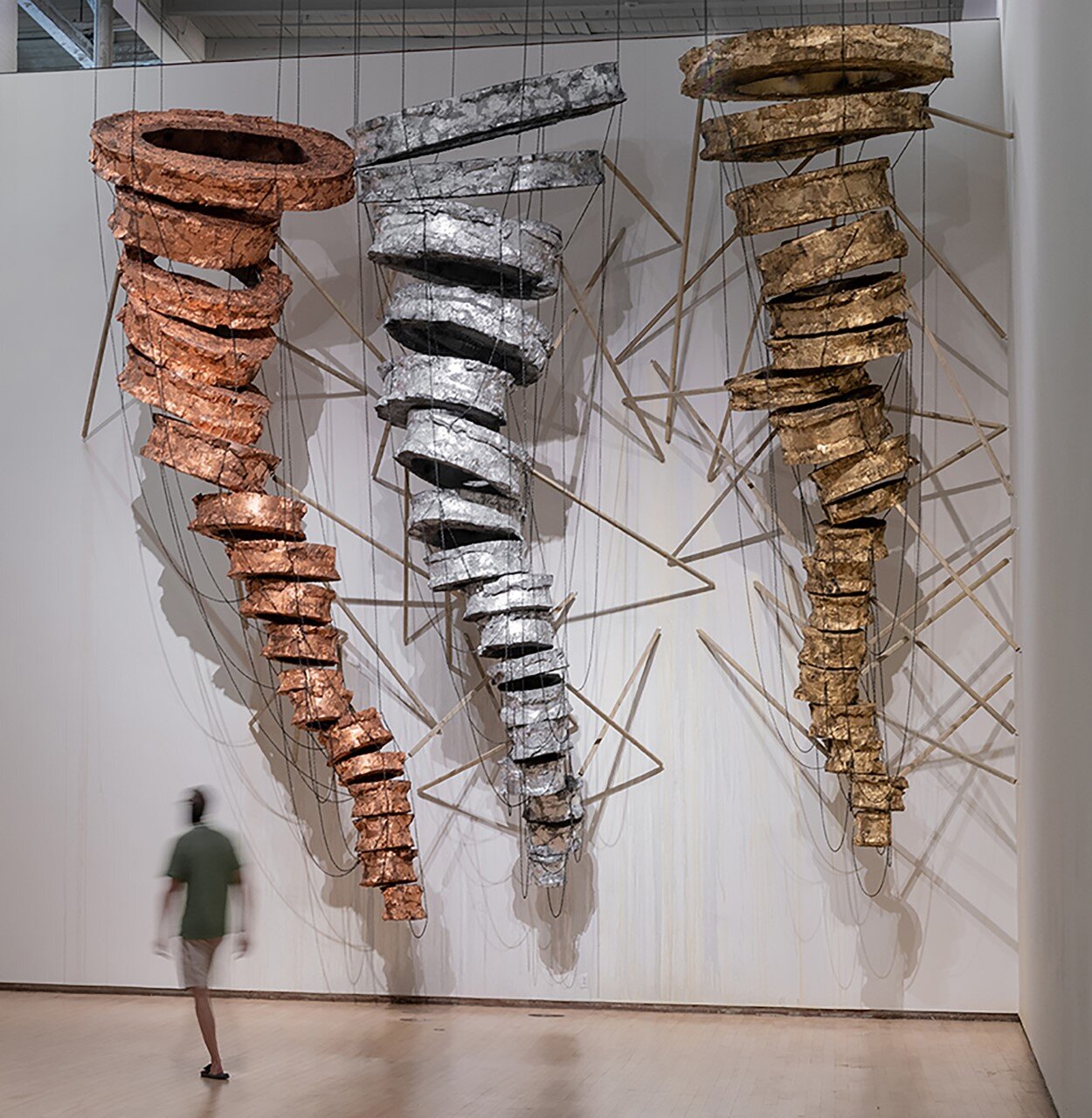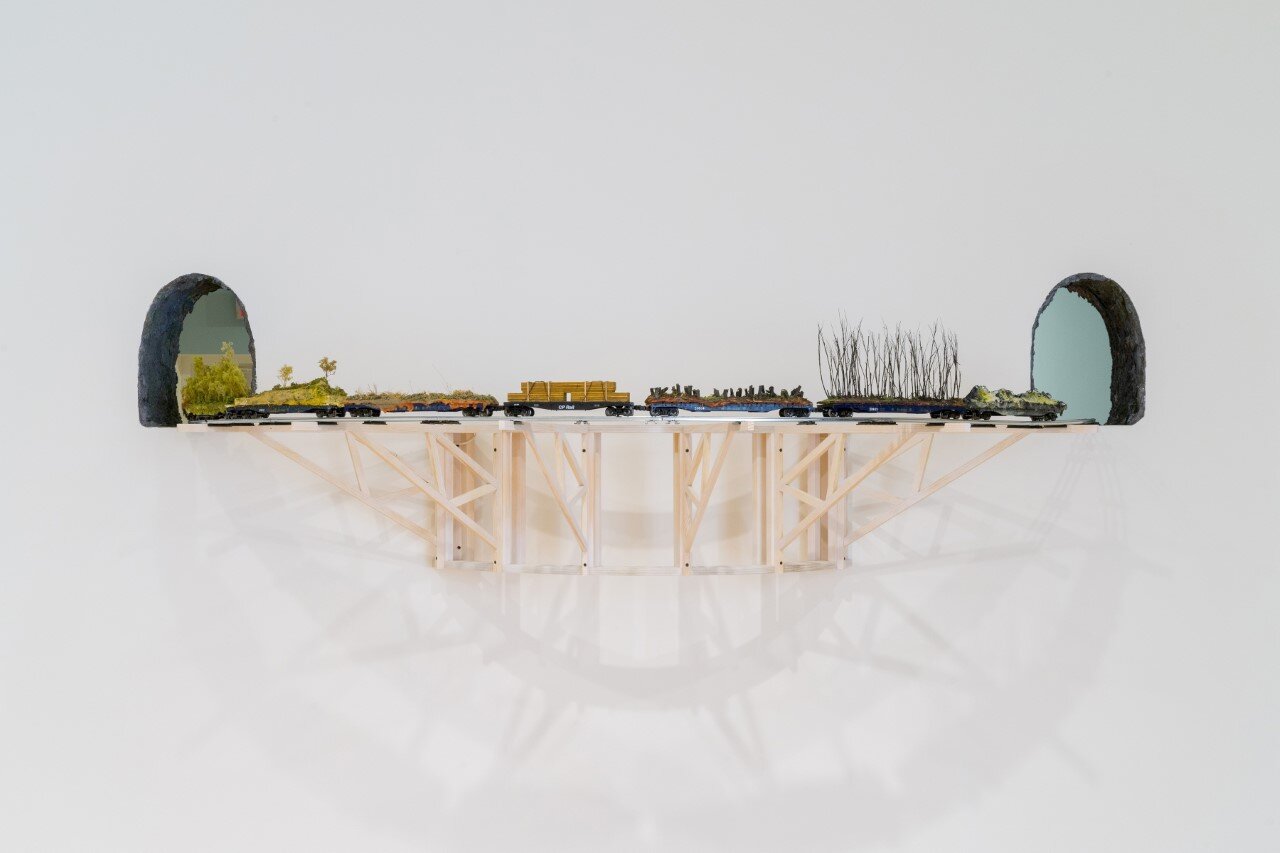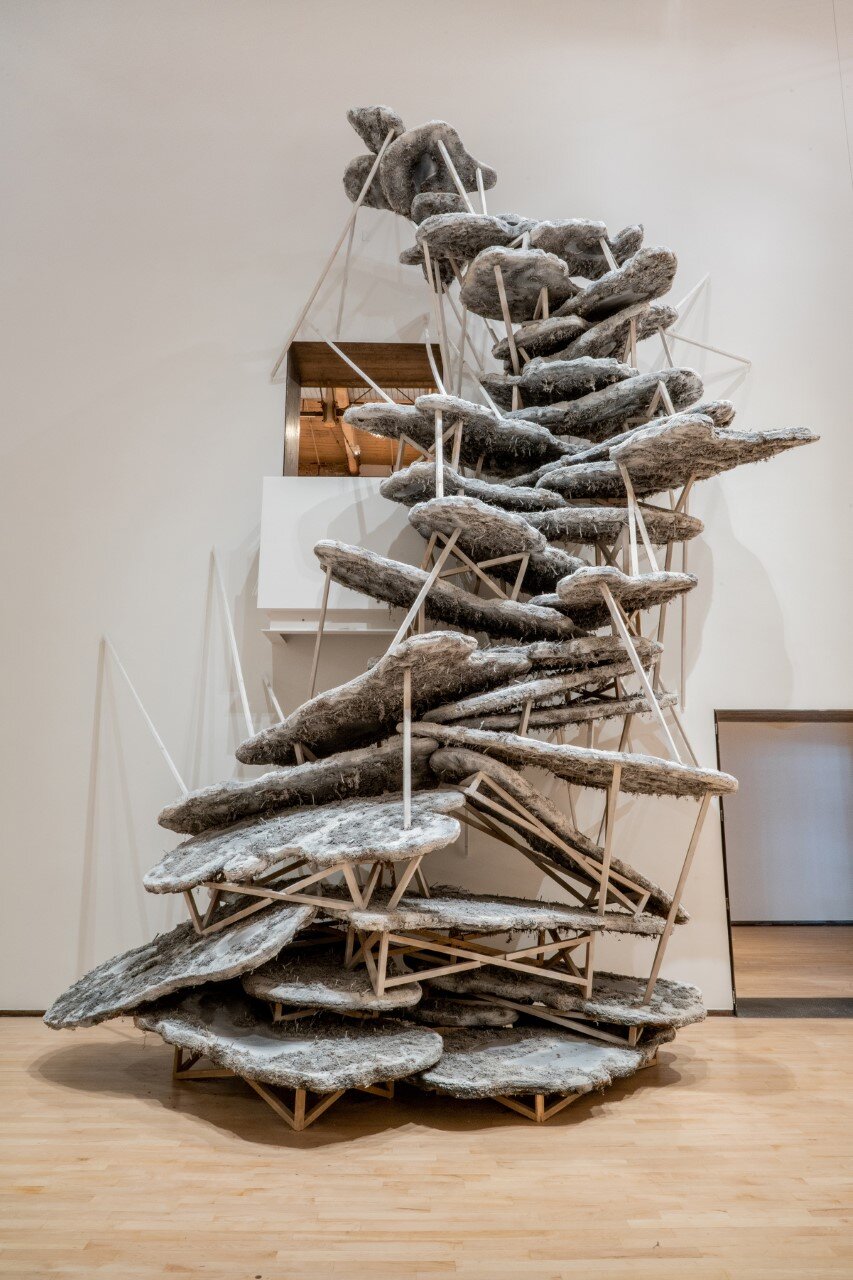Blane De St. Croix- artist & sculptor
Blane De St. Croix collaborates with scientists to create large scale installations and sculptures that engage the public on the important geopolitical and environmental issues facing us today. Falling the uninstall of his exhibition “How to Move a Landscape” at MASS MoCA. Blane tells sustainable art haus about his practice, working together with scientists and how the materials he uses are critical to the messages of his work.
Cold Front. Cotton, recycled foam, eco-resin, fabric, glue, plastic chips recycled from 67,000 water bottles and video projection.. Image provided by artist and is from the exhibition “How to move a Landscape” with the artist, MASS MoCA curator Denise Markonish, US senator Ed Markey and youth leaders from the Sunrise Movement.
You are known for creating large landscape sculptures and installations that reflect and highlight geopolitical conflicts and environmental issues. How did your practice develop in this direction and what drives you?
My work has always been about the land and human kind’s intervention into it; the discovery that we often create unintentional monuments for the landscape. For example, who would have known that the southern border with Mexico would become such an iconic cultural metaphor for people? It’s these unintentional monuments of the land that fascinate me and that’s where I go to have the narrative and conversation with the public. It’s best way to meet the viewer. We all have, at least in our memories, a positive relationship to nature and I’m using that as a vehicle through the land and landscape to connect important dialogues that I see globally and locally, especially climate change.
I have always conversed through installations and sculpture about land and landscape environment but it was probably around 2006/7 that landscape and having a dialogue with the public became my focus. Looking at unintentional monuments that bring forth memory, emotions and connections to the public, you can create something that brings the person to a place and create a conversation with them. Visually as a sculptor and artist that’s exciting to me and it’s important to have that kind of visual conversation. As artists, we all want to have a connection to the viewer and the audience. I am trying to not have a passive engagement, I’m trying to have an emotional engagement to try to motivate them to participate. I do that by finding fragments of land and landscape that can connect with them either through beauty or destruction or both. It brings them into the conversation.
You spend a lot of time on research and collaborations with scientists; for example, you’ve been a Smithsonian Artist Research Fellow and taken part in CEC Arts Link program at St. Petersburg. Can you tell us about how you go about working together with climatologists and scientists? Why do you feel is it important that scientists and artists work together?
I think there are multiple answers to this. Collaboration is truly the only way out of this so that we can really educate the public about climate change and what’s truly going on. Data and lecturing does not reach the public. We have to find a different vehicle and I think the arts is a great vehicle to share what’s going on with our climate and environment with the public. Scientists open a different kind of door for me to visually see. I originally thought that scientists had this “locked in a box” way of looking at things but they’re much more philosophical and expressive in the way they relate to the land and landscape of the earth. Dialogues with scientists really helps me to put together my visuals that I need to render out the subject matter and approach. Climate change is such a complex subject that I feel a high level of responsibility and respect for the scientists. I want to be able to understand it as much as possible from a “real” person’s point of view.
For example, my exhibition How to Move a Landscape at MASS MoCA allowed a conduit for people to talk about what they saw and about the content that drives that work. They then share that with others, including via social media. I think we [artists] have a large reach of the audience, which is an asset for the science community to get their work out to get their work out to a bigger audience.
Sustainability plays an important role in the sourcing of materials for your work. Cold Front is made from 65,000 plastic water bottles that you tracked down and sourced from a North Carolina company and Alchemy Triptych is made from recyled foam mattresses. As a result, your pieces tend to be extremely light. They are also constructed in a way that they can easily be broken down and reassembled. This means that whilst your works are large scale, they are easier and lighter to ship, thereby reducing the carbon footprint. How do you decide and source materials for your art?
It’s not driven by a material or a technique. It’s the idea and the content. It’s about land, landscape and climate change. I’m constantly looking for material to build pieces, these large installations - some of them are two/two and a half stories high. What I’m looking for is materials to exist as metaphors. So if I can find sustainable materials which have connections to major corporations that participate in sustainability, then it’s an asset to build it into the piece. It’s another layer for the public to witness and see. I find this very important.
For example. cold front is made out 65,000 recycled plastic water bottles from a company that’s trying to stop plastic water bottles going to landfill. They process them, sterilise them and chip them into flakes. These flakes are visually very beautiful to create a piece of art. I use that to have another layered conversation with the audience.
80% of the pieces I create are made out of recycled and repurposed materials and I think that drives home an important point to the public. I’m sharing the message that they can use recycled materials in many different ways, especially other artists. It comes back to that word “collaboration”. Collaboration is important in addressing climate change and sustainability. I think there are companies that deal with this philosophically and would love the opportunity to work with other artists.
1.ALCHEMIST TRIPTYCH (2020) Aluminum and copper sheeting, paint, recycled foam, and metal leaf in silver, copper, and gold. 2. MOVING LANDSCAPE II (2020) Wood, plywood, foam, plastic, model trains, paint, branches, dirt, other natural and recycled materials. 21-foot train track with 16 train cars 3. COLLAPSING PILLAR (2020) Paint, wood, eco-resin, natural and recycled materials. Images provided by artist.



